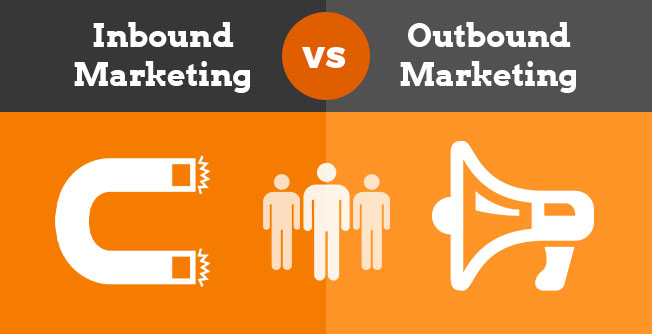What is difference between inbound and outbound marketing? What are the advantages of both and what are the methods for developing them?
In this quick article we want to provide you with a general overview that will allow you to better understand how distant but at the same time complementary these communication methods are, and why the former has definitely exceeded the latter , placing itself at the top of the most advanced approaches in terms of marketing.
Outbound marketing is now almost universally identified as traditional marketing, and it is the only way that many video production companies put in place until a few years ago. This method essentially involved one- way communication of the brand to the rest of the world.
The main limitation of this approach not only lay in its poor investment / benefit ratio , nor in the transversally of the target that is striking, very generic , but rather in its intrinsic characteristic of forcing and imposing its message on the audience . It is no coincidence, in fact, that outbound marketing is also called “interruption marketing “.
The limits of this strategic approach are naturally very evident, and concern precisely the interruption of the user while he is doing something else, indiscriminately and without his consent. The classic example of outbound marketing that we can give you is that of the TV commercial that interrupts your favorite program.
However, if we think of outbound marketing today, and integrate it into a more complex synergy of tools and approaches and, for example, in Marketing Automation, its techniques can be ” positivized ” through targeted actions towards an audience that has already shown a real interest in our product or service, and who will therefore be better prepared to receive our advertising message.
In practice, outbound marketing gives its best only when it operates in communion with inbound marketing, since it turns into a virtuous opportunity for companies to seek and create communication with previously profiled interlocutors. In this sense, therefore, the method turns out to be correct.
As for inbound marketing, it is now identified as the new generation of marketing, which does not focus on general communication and on the carpet but on the production of quality content capable of attracting users to a specific product or service, because the brand that offers it manages to leverage the satisfaction of a need or the resolution of a problem by offering real answers. In this way, the ability to discriminate the reference target derived from its precise identification already reduces upstream the user’s “disturbance” margin, and therefore error by the company. At the same time, it goes without saying that the cost / benefit ratio also increases.
In terms of method, inbound marketing is not an action but a strategic plan consisting of a series of tactics that operate simultaneously or in succession: from SEO to Content Marketing, from Email Marketing to Local Advertising, and so on.
That inbound marketing is exponentially more effective than outbound is now proven, but of course the principle is that the strategy is studied correctly. In the event that this occurs, we will be faced with the main advantages of this approach methodology, which we present briefly:
- It is able to attract higher quality leads, i.e. it largely eliminates random users and focuses on those potentially affected
- Facilitates the conversion process, because an increase in traffic to the company’s web channels corresponds to a greater propensity to fill out forms and positive responses to calls to actions
- It allows the creation of high quality lead databases, according to the previous step
- Correctly frame the lead and prepare it for purchase, heating it before the purchasing action through temporally targeted marketing actions that are correct in terms of content and customization
- Increases the brand image and enhances it, thanks to the proposal of quality content and the improvement of its service (a personalized offer is considered better)
- It creates a real interaction with the acquired and potential customer, through the structuring of complete marketing paths that follow the user from the initial knowledge phase to the post-sale and repurchase phase
 HammBurg Be informed with latest news, reviews, entertainment, lifestyle tips, and much more.
HammBurg Be informed with latest news, reviews, entertainment, lifestyle tips, and much more.




